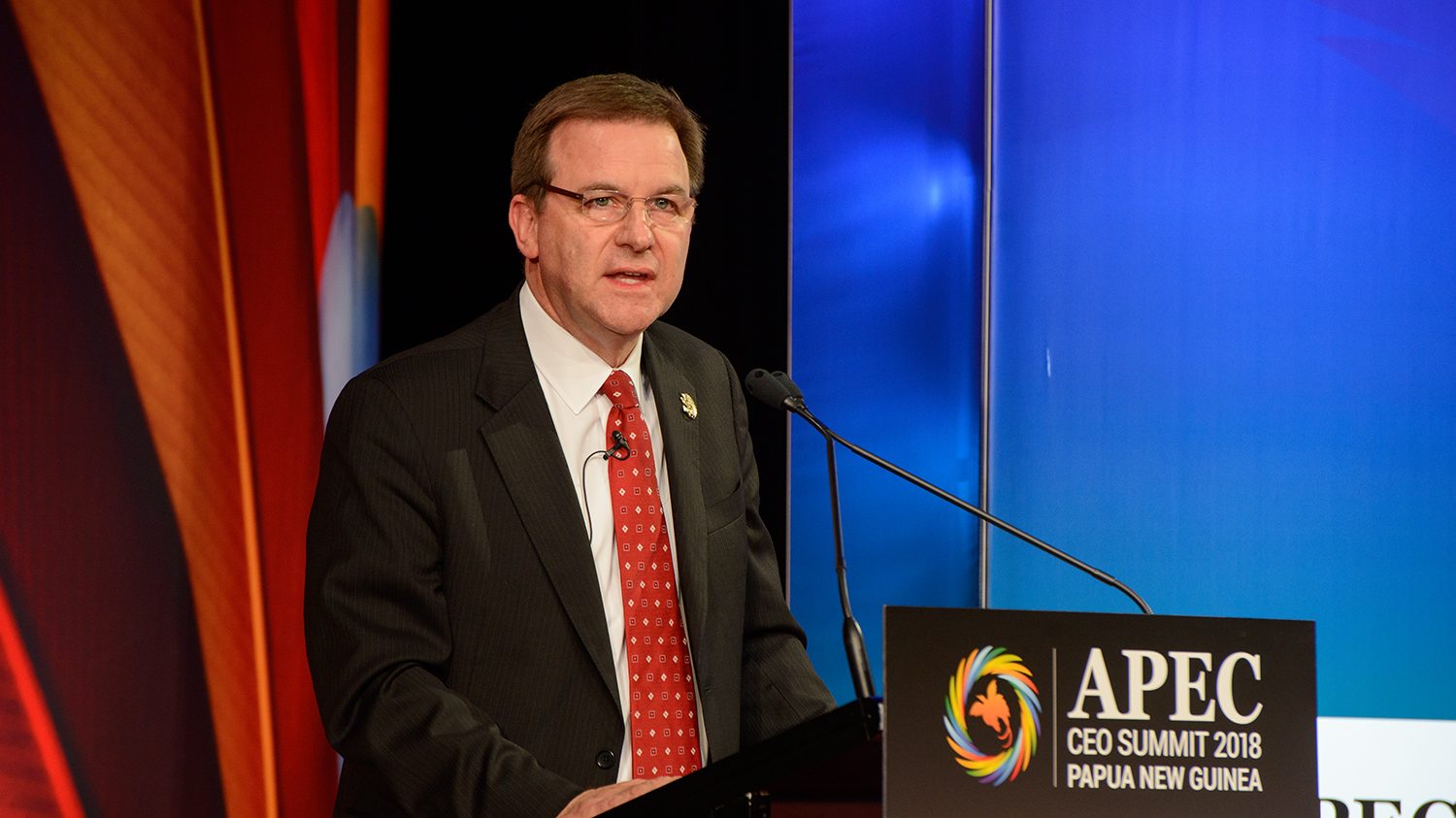Public and private sector leaders from 21 Pacific economies converged this week on Papua New Guinea (PNG) for the 2018 Asia-Pacific Economic Cooperation summit. The venue for the leaders meeting is a shiny, new landmark completed just weeks ago on Port Moresby’s waterfront – a building that symbolizes the island nation’s cultural heritage and its growing economy.
Less than five years since PNG’s first liquified natural gas (LNG) project was brought on stream, energy exports have surged, attracting continued investment and exploration, and helping to provide good jobs and sustainable economic development.
“It’s exciting to be here in this critically important area, at this vital time, because Asia-Pacific is where the 21st century will unfold,” said ExxonMobil Senior Vice President Neil A. Chapman, in opening remarks at the summit on November 16. “The abundant natural gas reserves of Papua New Guinea offer an abundance of opportunity for Asia-Pacific.”
Best known previously for its isolation and rugged terrain, the country is home to 8 million people and more than 800 indigenous languages. Today, the international attention brought by APEC and soaring regional demand for natural gas have become the hallmarks of nation on the rise.
Observers can look at ExxonMobil’s 19-billion dollar, state-of-the-art PNG LNG project that spans five provinces from the Highlands to the coast near Port Moresby, for the country’s trajectory. That project in 2017 produced 8.3 million metric tons of natural gas, 20 percent more than forecast when the facility started up in 2014.
Since 2010, ExxonMobil has spent more than $5 billion USD with local companies to help service its PNG project and has supported the country’s business Enterprise Centre , which has nurtured the capabilities of more than 500 PNG businesses and nearly 19,000 local entrepreneurs.
PNG LNG produces reliable electricity to power 20 percent of Port Moresby’s needs, with additional capacity for future generations. And the benefits extend throughout Asia-Pacific, where low-carbon fuel from Papua New Guinea joins natural gas exports from Australia, Qatar and elsewhere.
“When the full story of the 21st century is written, historians will reflect on the origins of the Golden Age in this region,” concluded Chapman. “And they’ll recognize places like Papua New Guinea – thanks to the enlightened vision of its leaders – as the engines that made such progress possible.”




